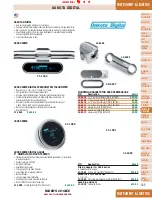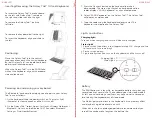AR0331
19
Table 8.
RECOMMENDED SENSOR GAIN
coarse_gain(0x3060[5:4])/
coarse_gain_cb (0x3060[13:12])
fine_gain (0x3060[3:0])/
fine_gain_cb (0x3060[11:8])
ADC Gain
0
6
1.23
0
7
1.28
0
8
1.34
0
9
1.39
0
10
1.45
0
11
1.52
0
12
1.60
0
13
1.69
0
14
1.78
0
15
1.88
1
0
2.00
1
2
2.14
1
4
2.28
1
6
2.47
1
8
2.67
1
10
2.91
1
12
3.20
1
14
3.56
2
0
4
2
4
4.56
2
8
5.34
2
12
6.41
3
0
8
Each digital gain can be configured from a gain of 0 to
15.992. The digital gain supports 128 gain steps per 6dB of
gain. The format of each digital gain register is
“xxxx.yyyyyyy” where “xxxx” refers an integer gain of 1 to
15 and “yyyyyyy” is a fractional gain ranging from 0/128 to
127/128.
The sensor includes a digital dithering feature to reduce
quantization noise resulting from using digital gain. It can be
disabled by setting R0x30BA[5] to 0. The default value is 1.
PEDESTALS
There are two types of constant offset pedestals that may
be adjusted at the end of the datapath.
The data pedestal is a constant offset that is added to pixel
values at the end of the datapath. The default offset when
ALTM is disabled is 168 and is a 12-bit offset. This offset
matches the maximum range used by the corrections in the
digital readout path. The purpose of the data pedestal is to
convert negative values generated by the digital datapath
into positive output data. It is recommended that the data
pedestal be set to 16 when ALTM is enabled.
The data pedestal value can be changed from its default
value by adjusting register R0x301E.
The ALTM pedestal (R0x2450) is also located at the end
of the datapath. The ALTM pedestal default offset is 0.


















